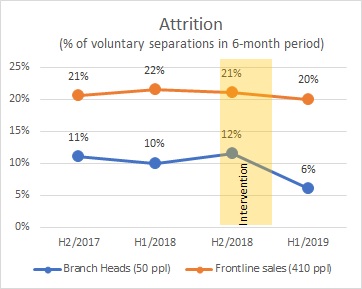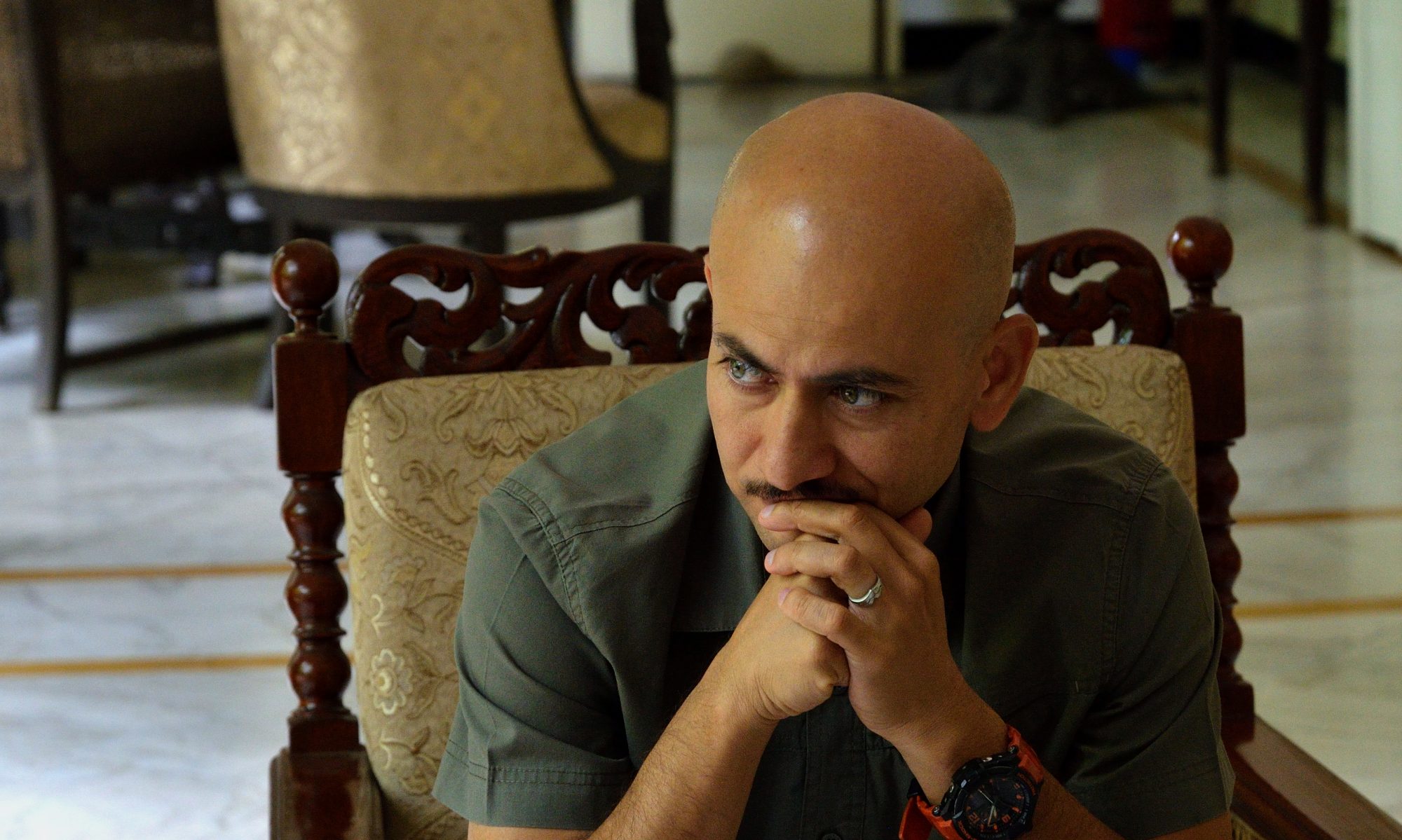Armed with data and tact, Lilette manages to extend the intervention to the next level
Flashback (Parts 1 & 2):
Six months have passed since the 8 Heads of Businesses at Millennial Motors participated in a 4-month long learning journey. That program was about learning to build a credible 2nd line of leaders, and about communicating with their teams in a more coherent way. Pemba Tsering was the faculty and coach for the intervention. Using a highly individualised learning plan, she went all out to move the needle, giving reminders for practice, shadowing and observing the learners and giving them candid feedback. Slowly, learners saw their intensive efforts paying off and their teams started to rate them higher on leadership behaviors.
For a more complete reading experience, read Part 1 and Part 2 first
IMPACT!
SIX months after the leadership intervention. Meeting between the MD (Dipankar), HR Head (Ardeshir) and L&D Head (Lilette).
Ardeshir: Thanks for making the time, Dipankar.
Dipankar: No problem. What’s it about?
Ardeshir: Lilette showed me some very interesting data, and we thought you should see it as well. Go ahead, Lilette.
Lilette: You’re aware of the intervention we started with the 8 Business Heads a few months ago.
Dipankar: Yes, I am.
Lilette: We ran 2 interventions concurrently. One was aimed at Business Leaders creating a 2nd line of leaders. The other was about them communicating in a coherent way so that the entire team is in sync. Some people participated in both programs; the others chose to participate in just one, when given the option.
Dipankar: Both programs went down well with them, I’m told.
Lilette: Yes, but there’s more to it. I’ve been keeping a close eye on some metrics to track the effectiveness of the intervention. We measured behaviors of the Business Heads as well as the impact on business. I wanted to share the latest figures with you.
Dipankar: Go ahead.
Lilette: We took dipstick measurements before the program, immediately after it and then 6 months after it ended. The last one was meant to allow short-term effects to wear off… and for longer term effects to be visible through the metrics.
Dipankar: I’m with you so far. Go on.
Lilette: Let me pull up the metrics for one of the programs… here they are.

Lilette: We surveyed Branch Heads who report to each Business Head. We asked them to rate the intensity of leadership behavior displayed by their leader, on a 10-point scale. On these charts, we’ve plotted the average of the ratings they awarded.
Dipankar: I see. There’s a remarkable rise immediately after the intervention. That’s good. And then I see that things have plateaued out.
Lilette: Yes, after the program ended, their abilities have plateaued on average. If you look closely, some have continued to improve while ratings for some others have even dropped.
Dipankar: What do you make of that?
Lilette: It’s hard for everyone to keep the momentum when support is withdrawn. But we can’t be scaffolding learning forever… it has to end sometime. What I’m happy about is that the reductions are minor. Also, the big gain as compared with pre-program ratings is what really matters.
Dipankar: Yes, that is still significant. You mentioned business impact data as well.
Lilette: Yes, I have that too. Here’s the first metric: Attrition.

We measure the attrition data for the first half and second half of our financial year. And we measure it band-wise… separately for Branch Heads and for Frontline salespeople.
Dipankar: We seem to have made a dent in the attrition for Branch Heads.
Lilette: Yes, the number is down to 6% after many years.
Dipankar: And you’re claiming Branch Heads are staying with us longer due to the Leadership intervention that their managers participated in? There could be other factors driving this.
Ardeshir: We haven’t changed any other employee policies significantly, which may account for this dip. Also, the attrition for frontline salespeople hasn’t changed much. The Branch Heads are directly affected if Business Heads change their ways. Frontliners wouldn’t be affected by our intervention. That also tells me there’s a strong link between this intervention and retention of Branch Heads.
Dipankar: Hmmm… which of the 2 programs contributed more to this outcome?
Lilette: That’s hard to say… it’s probably a combo of both. Giving Branch Heads room to grow and coherent communication by leaders… they are both important factors which affect their decision about staying on or leaving.
Dipankar: Is there any other business impact you’ve noticed?
Lilette: Impact on Productivity. Here’s the data.

Dipankar: Very nice to see that. It’s more than a 10% jump in the last 6 months. Nothing beats getting higher revenues from the same resource pool.
Ardeshir: It’s a 12.5% jump. The productivity number has been rising for the last couple of years, but at a slow rate. This intervention seems to have freed up something inside our workforce… they’re really going for it now.
Dipankar: Well done, then. Is there anything else?
Next Step!
Ardeshir: We want to roll-out this intervention one level lower. If the effect on attrition and productivity is so stark and immediate, then I’d like to arrest the attrition level amongst frontline salespeople … 20% on a half-yearly basis is extremely costly for us. Dipankar: Sure, go ahead. This seems worth the money… given the business impact.
Lilette: There’s an issue. The numbers at the next level are 6-fold.
Dipankar: Yeah, so lets hire a bigger room. It won’t cost six times as much, will it?
Lilette: Actually, its not so simple. This wasn’t really a classroom-type program. Most of the faculty’s time was spent with learners individually. It was mostly individual observation and feedback. So the budget will balloon up quite a bit.
Dipankar: In that case, I’m going to hit the pause button. Will you check with the faculty once more about the cost for this? Then lets meet again in a bit.
Ardeshir: Yes, lets do that.
Leaders as keepers of the flame!
Lilette’s office
Lilette: Welcome, Ashok and Pemba.
Ashok: Always a pleasure to be here, Lilette. You mentioned an interesting email you’ve received, when we spoke on phone.
Lilette: Yes, and that’s a good way to start today’s meeting. The email is from Imran Haidari… a Branch Head who reports in to Shaan. I’ll read it out verbatim.
Hello Lilette. A few months ago, Shaan (who is my manager and also the Head of our business) put in place some new processes in our department. They involved things like mutual agreement on how he would run different initiatives and more regular meetings with us individually. I gained immensely from this change, in terms of goal clarity, more support from Shaan where I need it, as well as more autonomy where it was needed. Shaan later told me that all this was the result of a 4-month program that he and other business heads participated in. I would like to replicate the same model in my branch, where I head a team of 12 salespeople. But I think it will help if I learn the process formally. Could you suggest how to do this?
Lilette: That’s a vote of support for the intervention. And for you, Pemba. This company has seen a really effective L&D program after a long time.
Pemba: Thank you, Lilette.
Lilette: I’ve been thinking about rolling out this intervention to the Branch Heads. Pemba, would you have the time for it? I mean, this being quite an intensive intervention and all? How do we handle 50 learners instead of just 8? And would your fee go up many fold?
Pemba: Actually, Ashok and I had discussed the possibility of assisting the next level of leaders. And we think we shouldn’t be the ones conducting the program.
Ashok: That’s right. We think your Business Heads should now shoulder this responsibility. Of course, we can handhold them a bit, and develop their ability to teach. But beyond that you’re better served if they act as faculty and coaches for their own businesses.
Lilette: I have heard that argument before… leaders as role models and teachers. They know the business context better, they have a stake in succeeding and it would be a force multiplier… 8 faculty instead of just one.
Pemba: And? Do I hear a ‘but’?
Lilette: (Smiles) There is a big ‘but’! Will they agree to do it? I suspect some will plead lack of time.
Ashok: I wish to disagree, Lilette. I think they already have a sense of the impact they’ve had on attrition and productivity, by changing the way they lead and communicate. You may find them willing and eager to take charge of this initiative. It just makes business sense for them, especially if you’re going to load any costs on each business’s separate budgets.
Lilette: What’s the downside of having them do it?
Ashok: They may get waylaid by pressures of everyday work. They may shift focus away from this interventoin. And there won’t be any impact then.
Lilette: So that’s where someone like you could come in?
Ashok: That’s possible. Or L&D could play that role too. Collect feedback from the trenches every month, share it with the Business Heads, nudge them to stay on track.
Lilette: Hmm… we could do that. And we could lean on you to help them teach effectively. Being able to do something is distinct from being able to teach it to somebody else.
Ashok: Yes, we’re comfortable taking on that role.
Decision!
Dipankar’s office
Dipankar: So you’re telling me it won’t cost much because Pemba restrict herself to a support role. And that our 8 Business Heads will do the heavy lifting.
Lilette: Exactly. I have the concurrence of the Business Heads for this.
Dipankar: You know, this top-down journey is proving to be so much smoother. The last few times, when we tried a bottom-up approach for L&D initiatives, there was so much resistance.
Lilette: My thoughts exactly. Every cadre would complain, “Teach this to our managers first. They won’t let us try this out.” They turned out to be right… their managers wouldn’t have much patience when they started to implement new learning, often making mistakes along the way. Without the sponsorship and support of senior leaders, such initiatives always run into rough weather. This time, I fully expect our Business Heads to show more empathy as Branch Heads learn… after all, they’ve experienced the struggle of learning first-hand.
Dipankar: I’d say, its a go. When do we start?
Lilette: Actually, its already started. When I met you last week, I didn’t know that 3 of them have already started urging their Branch Heads to adopt the new practices. This train is already on its way… what it needs is a little formal push… so that all businesses benefit, and the momentum can be sustained. Pemba is going to be working with them in different intensities… some need more structure and handholding, others may already have their own way of going about it.
Dipankar: Sounds good. Let’s roll!

